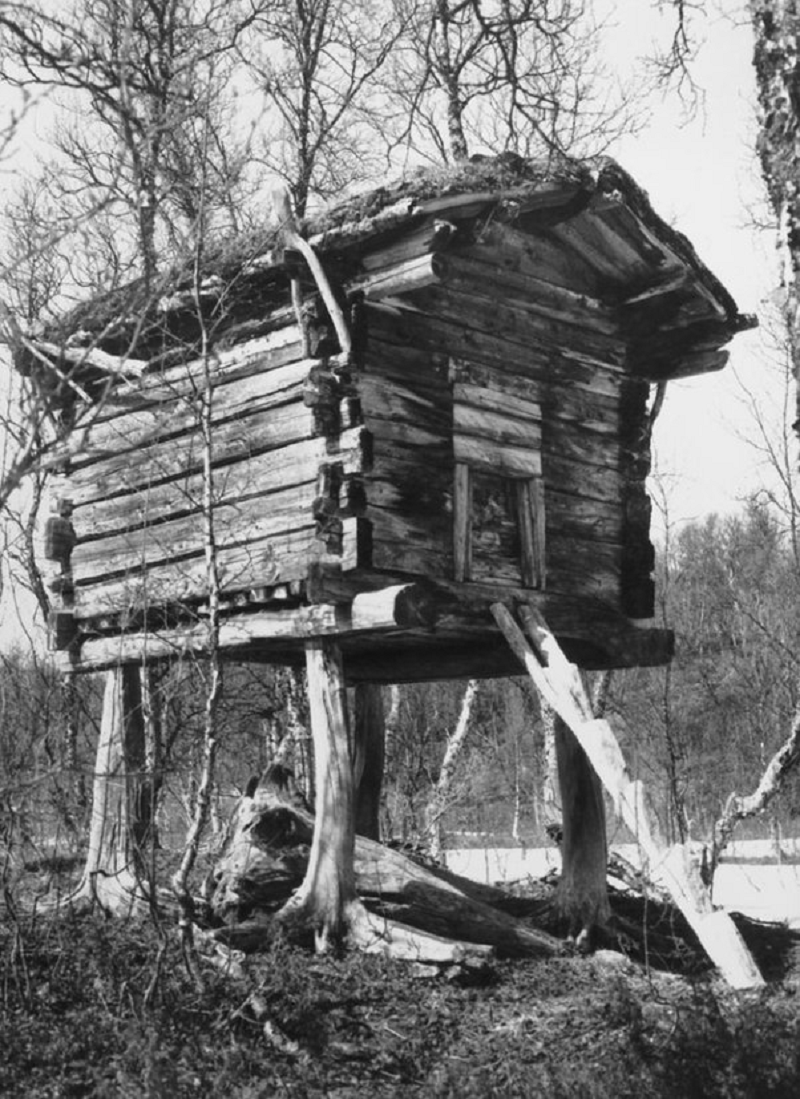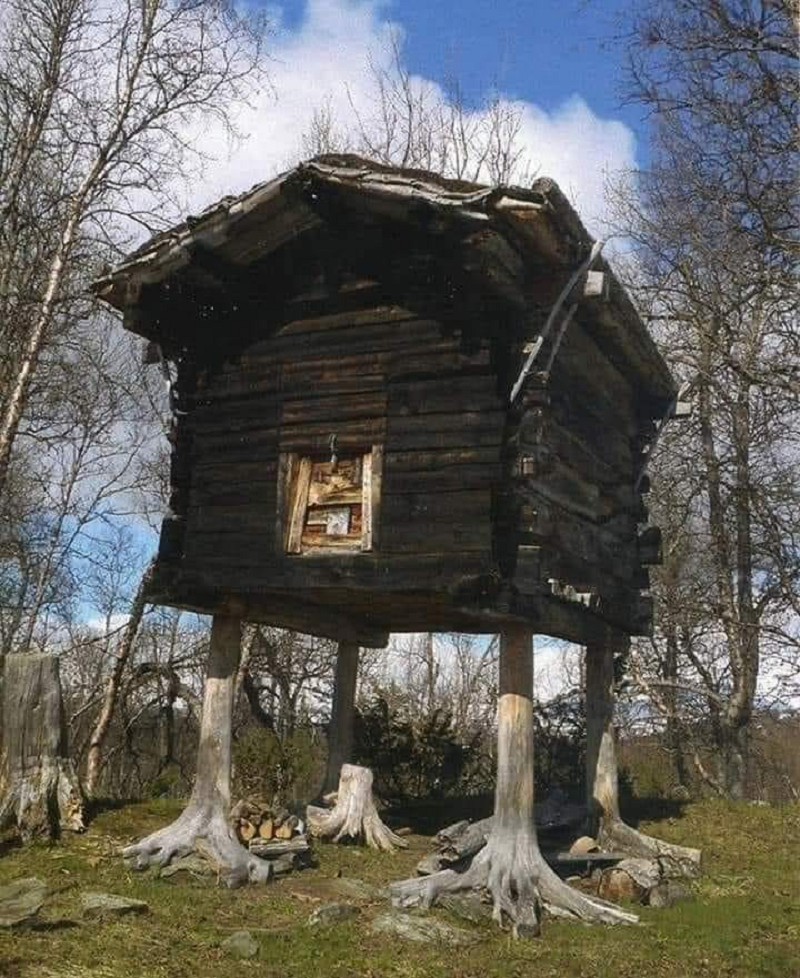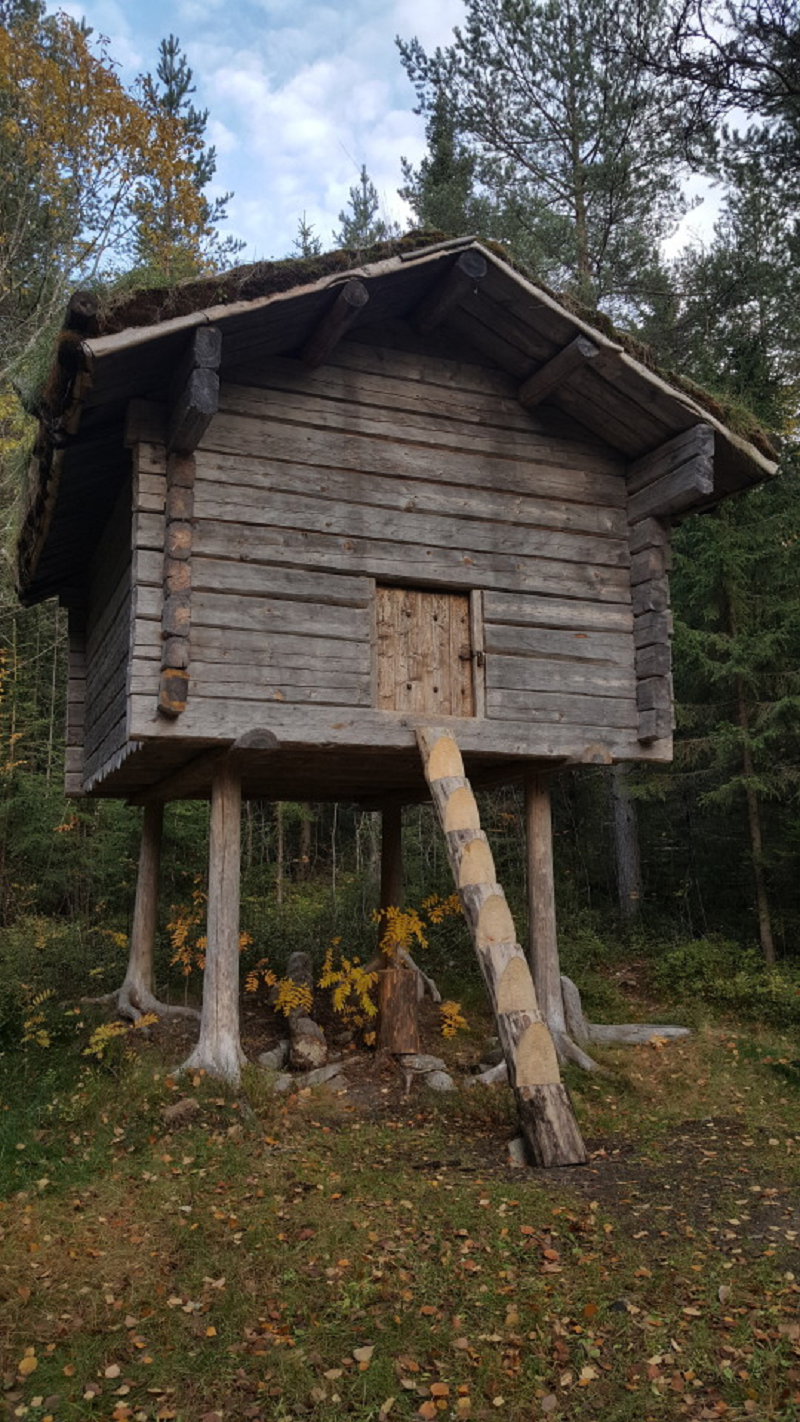Nestled amidst the serene landscapes of Hattfjelldal municipality in Norway lies a peculiar house, shrouded in the mystique of centuries past. Built in the 18th century CE, this structure stands upon an unconventional foundation – tree stumps resembling chicken legs. Known locally as a “Stabbur,” this architectural wonder serves as a testament to the ingenuity of its creators and the rich cultural tapestry of the region. As we delve into the history and significance of this ancient abode, we uncover connections to folklore, music, literature, and the enduring allure of enigmatic characters like Baba Yaga.

Unraveling the Mystery of the Chicken-Legged House
At first glance, the sight of a house propped upon chicken legs may seem like a scene from a fairy tale. However, the reality is steeped in the pragmatic traditions of Norwegian architecture. Stabbur, like the one in Hattfjelldal, were commonly used as storage spaces, elevated from the ground to protect precious provisions from pests and moisture. The utilization of tree stumps as a foundation not only elevated the structure but also provided natural insulation against the harsh Scandinavian winters.
Echoes of Folklore: Baba Yaga and the Chicken-Legged Hut
The resemblance of the Stabbur to the iconic dwelling of Baba Yaga, a figure deeply ingrained in Slavic folklore, is uncanny. Baba Yaga, often depicted as an enigmatic old woman residing in a hut perched upon chicken legs, embodies both benevolent and malevolent qualities. In some tales, she aids the protagonist on their quest, while in others, she is a fearsome entity who devours unsuspecting travelers. The parallels between the Chicken-Legged House in Norway and Baba Yaga’s abode evoke a sense of wonder and intrigue, blurring the lines between reality and myth.

Interdisciplinary Connections: Music, Literature, and Film
The influence of Baba Yaga transcends folklore, permeating various artistic mediums. Modest Mussorgsky’s “The Hut on Hen’s Legs (Baba Yaga)” from his suite “Pictures at an Exhibition” immortalizes the mystique surrounding this enigmatic character. English progressive rock band Emerson, Lake & Palmer further popularized Baba Yaga’s tale with their rock adaptation of Mussorgsky’s composition. In literature, authors like GennaRose Nethercott and Sophie Anderson reimagine Baba Yaga’s narrative, infusing it with new perspectives and cultural nuances. Additionally, Baba Yaga’s legend finds a place in cinema, as evidenced by Jessica Oreck’s documentary “The Vanquishing of the Witch Baba Yaga.”
Exploring the Legacy of Baba Yaga
The enduring fascination with Baba Yaga speaks to her status as a cultural icon whose legacy continues to captivate audiences across the globe. Through her multifaceted portrayal in music, literature, and film, Baba Yaga transcends her origins in Slavic folklore, evolving into a symbol of resilience, wisdom, and the enigmatic forces of nature. As we reflect on the parallels between the Chicken-Legged House in Norway and Baba Yaga’s mythical dwelling, we are reminded of the enduring power of storytelling to transcend time and place.

Conclusion
In the heart of Norway’s Hattfjelldal municipality stands a testament to human ingenuity and the enduring allure of folklore. The Chicken-Legged House, with its unconventional foundation and echoes of Baba Yaga’s mythical abode, serves as a reminder of the interconnectedness of culture, history, and imagination. As we marvel at this ancient architectural marvel, let us also celebrate the timeless legacy of characters like Baba Yaga, whose enigmatic presence continues to inspire and captivate us to this day.


